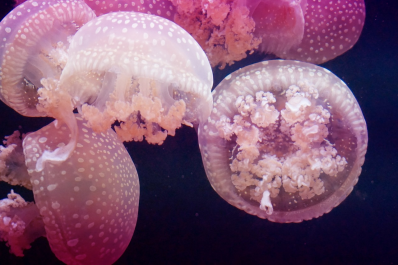Perfect verb form: cassiopeia jellyfish
The Grammar Bit!
Read the six scintillating sentences opposite. At first glance, they all appear to be written in the past tense with ‘- ed’ ending verbs signalling that events and actions have already taken place.
On closer inspection, the first three sentences have events and actions that started in the past, but are either still happening now or are in some way connected to the present. We say that these sentences are written in the present perfect form of the past tense. Notice how the words ‘has‘ and ‘have‘ are used to give this additional layer of meaning.
The fourth, fifth and sixth sentences describe actions and events that started in the past and ended at another point in the past. You’ll notice how the word ‘had‘ has been used to give this additional layer of meaning. We say that these sentences are written in the past perfect form of the past tense.
With your talk partner, see if you can think of one further sentence for each form. (Your sentences don’t have to relate to the cassiopeia jellyfish.)
Scintillating Sentences
Present perfect form
1) The bell-shaped jellyfish have fallen victim to a ravenous leatherback turtle.
2) For many days, the film crew has braved the elements.
3) She has just been stung by the tentacles of that washed-up jellyfish.
Past perfect form
4) The jellyfish had drifted on the ocean currents for many miles before arriving at their sunbaked destination.
5) The underwater camerawoman had been captivated by the sunbathing jellyfish for several hours and was now playing back the incredible footage to her producer.
6) The jellyfish had feasted on their algae and were now resting on the seabed amongst the multi-coloured seaweed and the spiny sea urchins.

Did you know?
A jellyfish’s mouth is located at the centre of its body. It is from here that it both eats and discards waste. It can also squirt a jet of water from this small opening, propelling the animal forwards.

